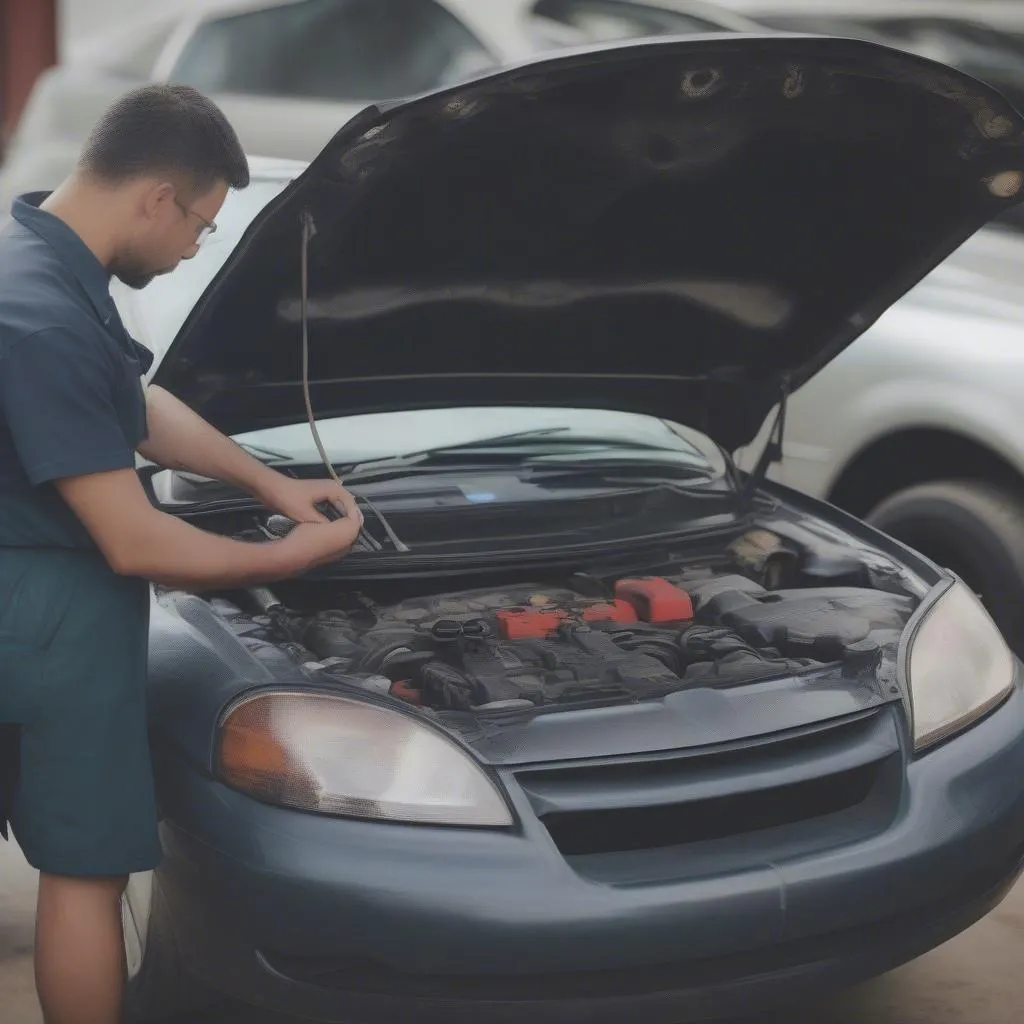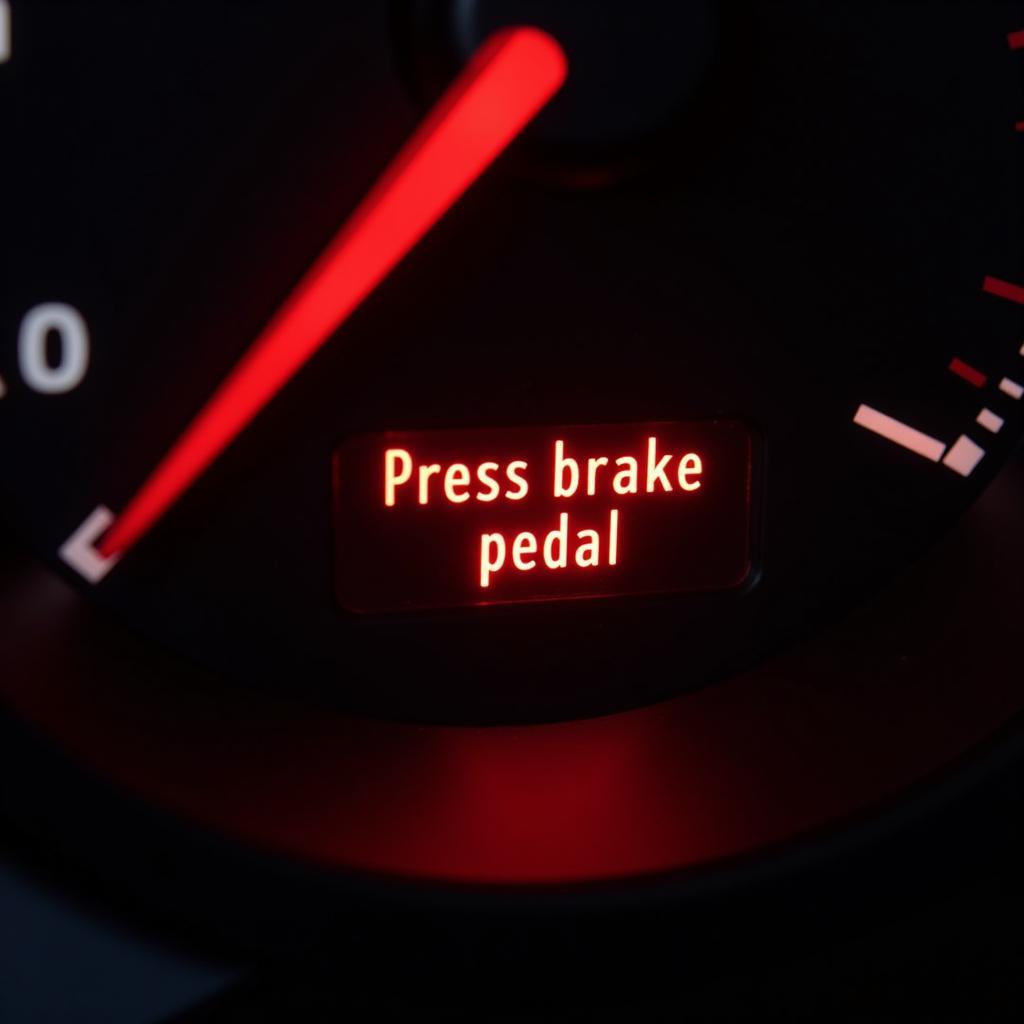If your brake warning light comes on when turning, it can be a disconcerting experience. This issue can stem from various problems, ranging from low brake fluid to more serious issues like a failing ABS system. Understanding the potential causes and solutions is crucial for maintaining your vehicle’s safety and performance. Let’s delve into the reasons why this happens and what you can do about it.
Why Does My Brake Warning Light Come On When Turning?
Several factors can contribute to your brake warning light illuminating when you turn. One of the most common causes is low brake fluid. As your brake pads wear down, the brake fluid level naturally drops. When turning, the fluid shifts, which can trigger the warning light, especially if the level is already borderline. Another potential culprit is a faulty brake fluid level sensor. This sensor can malfunction, sending incorrect signals to the dashboard even if the fluid level is adequate. Sometimes, a worn-out brake pad can also trigger the warning light, especially when turning, as the worn pad shifts slightly in the caliper.
brake warning light comes on when turning right can be especially concerning. This can sometimes indicate an issue specific to the right side of the braking system, like a leaking brake line or a stuck caliper.
Diagnosing the Problem: A Step-by-Step Guide
-
Check the Brake Fluid Level: Open the hood and locate the brake fluid reservoir. Check the fluid level against the minimum and maximum markings. If the level is low, add brake fluid of the correct type.
-
Inspect Brake Pads: Visually inspect the brake pads for wear. If they appear thin or worn down, they likely need replacing. x5 brake pads warning light provides specific information related to BMW X5 models.
-
Check for Leaks: Look for any signs of brake fluid leaks around the brake lines, calipers, and wheel cylinders. Leaks can indicate a serious problem that requires immediate attention.
-
Test the Brake Fluid Level Sensor: If the fluid level is adequate, the sensor itself may be faulty. A qualified mechanic can test the sensor using a diagnostic tool.
What if the Brake Warning Light Still Comes On?
If you’ve checked the fluid level, pads, and lines, and the light persists, it’s time to consult a professional. They can use advanced diagnostic tools to pinpoint the problem and recommend the appropriate repairs. how to turn off brake pad warning light mercedes offers guidance specifically for Mercedes owners.
Advanced Diagnostic Techniques
Modern vehicles utilize complex braking systems, often incorporating anti-lock brakes (ABS) and electronic stability control (ESC). These systems rely on sensors and electronic modules that can malfunction, triggering the brake warning light. Diagnosing these issues requires specialized equipment and expertise. Remote diagnostic services are increasingly popular, allowing technicians to access vehicle data and identify problems remotely. Furthermore, software updates and programming adjustments can often resolve complex issues without physical intervention.
jaguar xj brake pads low warning highlights the importance of addressing brake pad warnings in Jaguar XJ models.
Why is Regular Brake Maintenance Important?
“Regular brake maintenance is essential for ensuring your safety on the road,” says automotive expert, David Miller. “Addressing brake issues promptly, including a brake warning light, can prevent more serious and costly repairs down the line.”
Preventing Future Issues
Regular brake inspections are crucial for preventing future problems. It’s recommended to have your brakes checked at least once a year or every 12,000 miles. This includes inspecting the brake pads, rotors, calipers, and brake fluid.
mini cooper brake fluid warning light provides specific information for Mini Cooper owners.
Can I Drive with the Brake Warning Light On?
“While you might be tempted to ignore the brake warning light, it’s never a good idea,” warns Sarah Chen, a certified automotive technician. “Driving with a brake warning light on can be dangerous and could lead to brake failure.”
Conclusion
If your brake warning light comes on when turning, don’t ignore it. Taking swift action to diagnose and address the problem is crucial for your safety and the longevity of your vehicle. While some issues, like low brake fluid, can be easily resolved, others may require professional attention. Regular maintenance and prompt attention to warning lights are the keys to ensuring a safe and reliable braking system. Remember, your safety is paramount.
FAQ
-
What does the brake warning light mean? It indicates a potential problem with your braking system, such as low brake fluid or worn brake pads.
-
Is it safe to drive with the brake warning light on? No, it can be dangerous and could lead to brake failure.
-
What should I do if my brake warning light comes on when turning? Check your brake fluid level, inspect your brake pads, and look for leaks. If the problem persists, consult a mechanic.
-
How often should I have my brakes checked? At least once a year or every 12,000 miles.
-
Can a faulty sensor cause the brake warning light to come on? Yes, a malfunctioning brake fluid level sensor can trigger the warning light even if the fluid level is adequate.
-
What are some advanced diagnostic techniques for brake problems? Remote diagnostics and software updates are increasingly used to identify and resolve complex brake issues.
-
How can I prevent future brake problems? Regular brake inspections and maintenance are key to preventing future issues.


